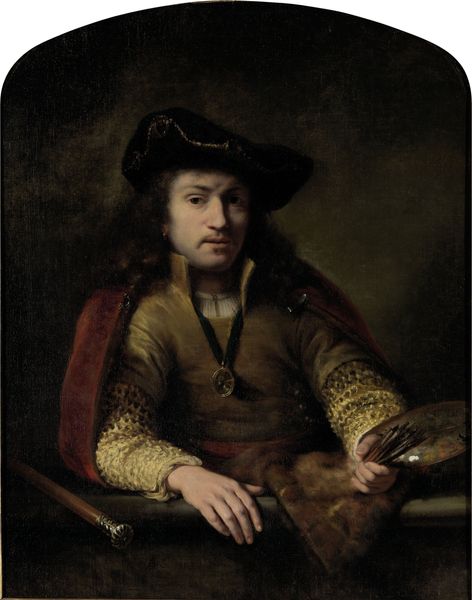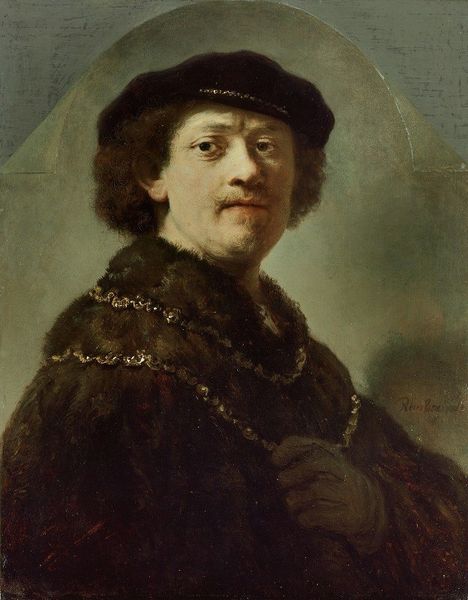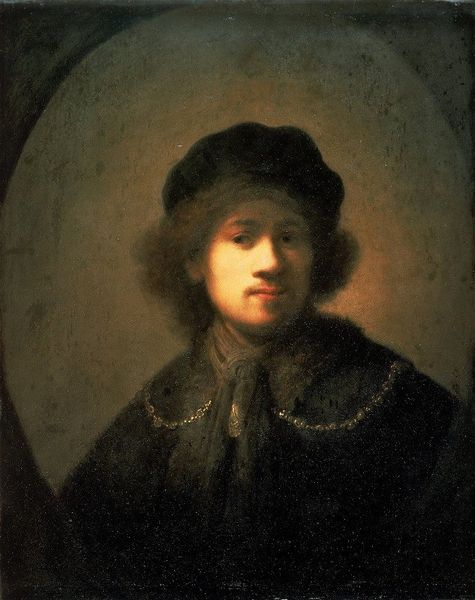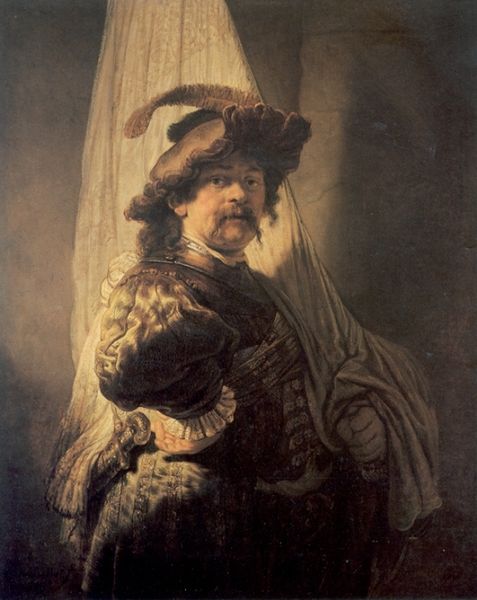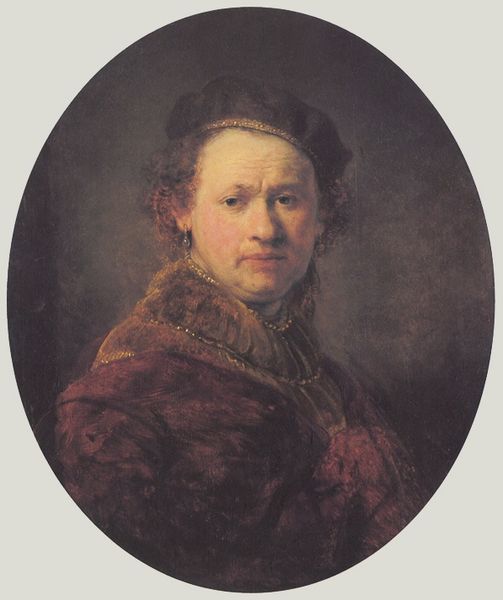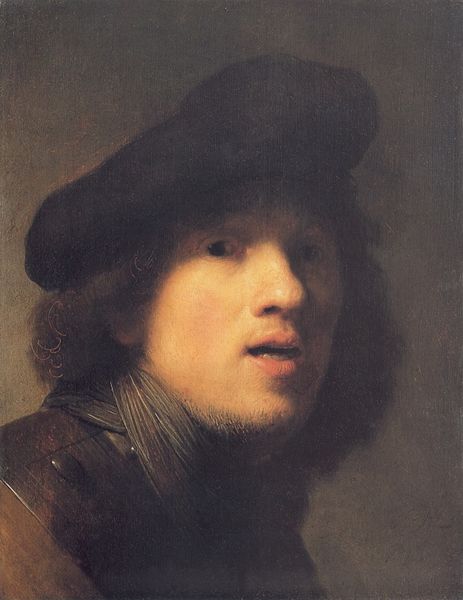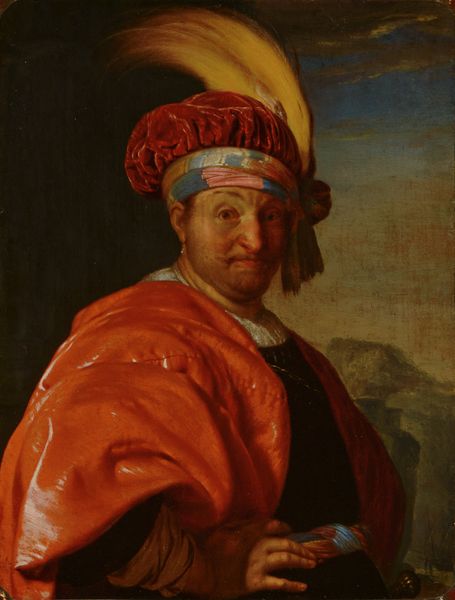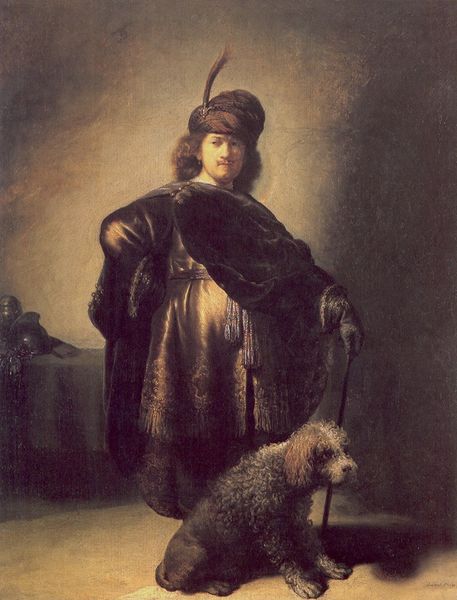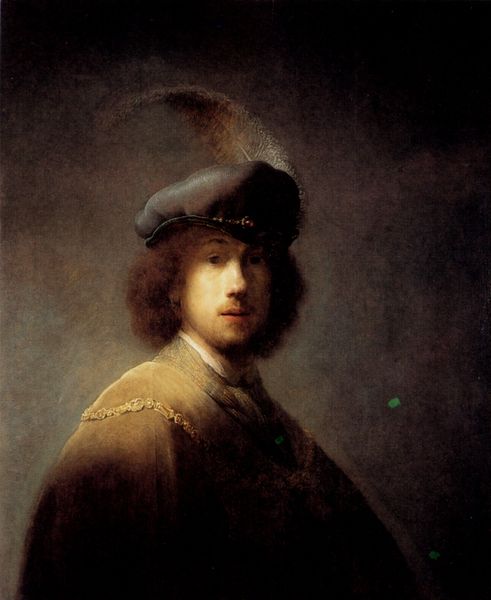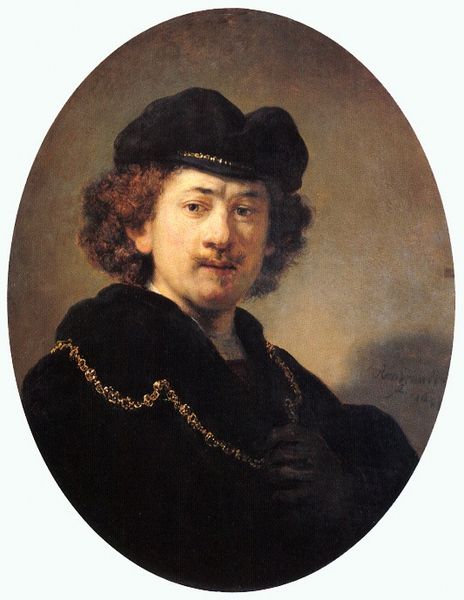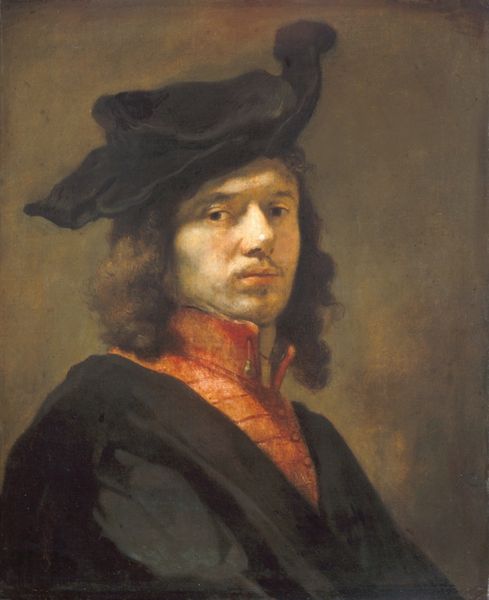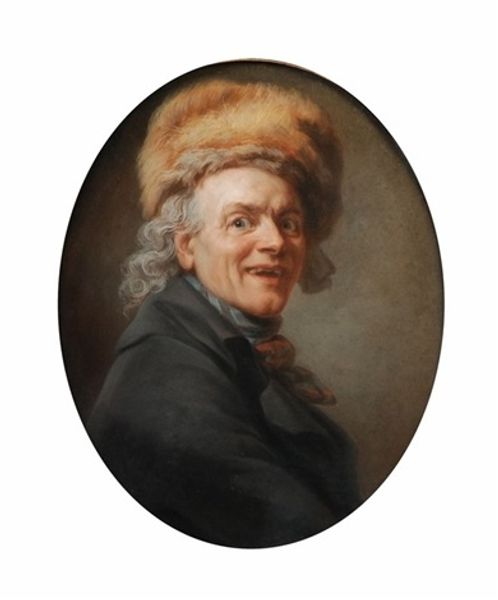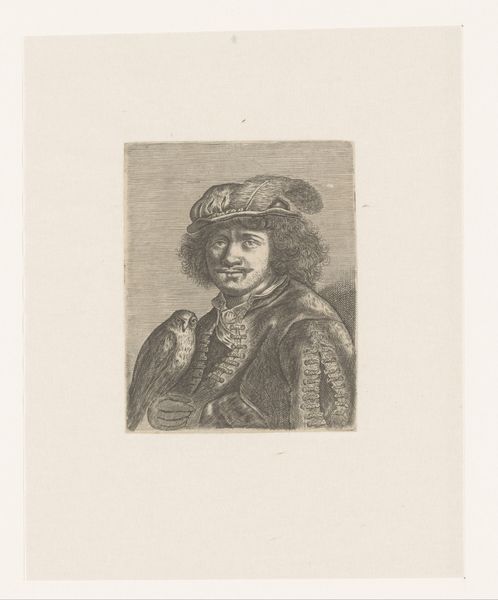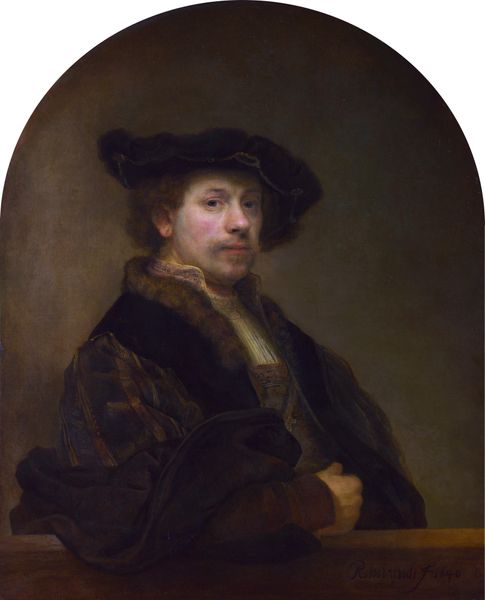
panel, painting, oil-paint
#
portrait
#
panel
#
self-portrait
#
baroque
#
dutch-golden-age
#
painting
#
oil-paint
#
figuration
Dimensions: 66 x 80.5 cm
Copyright: Public domain
Curator: We are looking at Rembrandt van Rijn’s *Self-portrait with Helmet*, from 1634, an oil painting on panel. Editor: It's striking, immediately dramatic. The low-key lighting, that feathered helmet—there's a distinct theatrical quality. I wonder, who is Rembrandt trying to be here? Curator: It’s interesting that you focus on the persona. Certainly, Rembrandt often used self-portraiture to explore different identities, and to examine themes of class and status. The helmet, in particular, carries historical weight. What does it signify to us now? Editor: I think there's a tension between power and vulnerability. He's got this weighty helmet on, implying a sort of military prowess, but the face staring back is incredibly soft, almost questioning. The intersectionality of his race, gender, class and self representation here is rich and potent! Curator: Well, the Baroque style thrived on contrast, on juxtaposing grandeur and humanity. It's no accident that Rembrandt emphasizes that inherent tension, using it to engage viewers. It challenges traditional ideals. The way he's positioned himself against this ambiguous dark space is itself, I think, crucial. What do you make of the dark background? Editor: Absolutely. The setting feels both intimate and imposing, emphasizing the subjective reality of the painter—highlighting the tension between the historical construction of self, class and his identity as an artist within 17th-century Netherlands. Curator: There’s a continuous critical debate concerning Rembrandt and class. Looking at the state of politics in the Dutch Republic during the Golden Age, it shows his profound exploration of his self identity and intersectionalites. Editor: Looking at the impact and role art plays in societal structure—this piece really makes you consider self-perception during the period it was made in. What can this type of self representation say about what he was experiencing and the public life of art in this context? Curator: The socio-political and institutional forces surrounding artists in 17th-century Dutch Republic cannot be overlooked, I agree. Editor: Precisely. Overall this has changed my perception on this image from its materiality to an artistic commentary with intersectionality and more awareness than before.
Comments
No comments
Be the first to comment and join the conversation on the ultimate creative platform.
